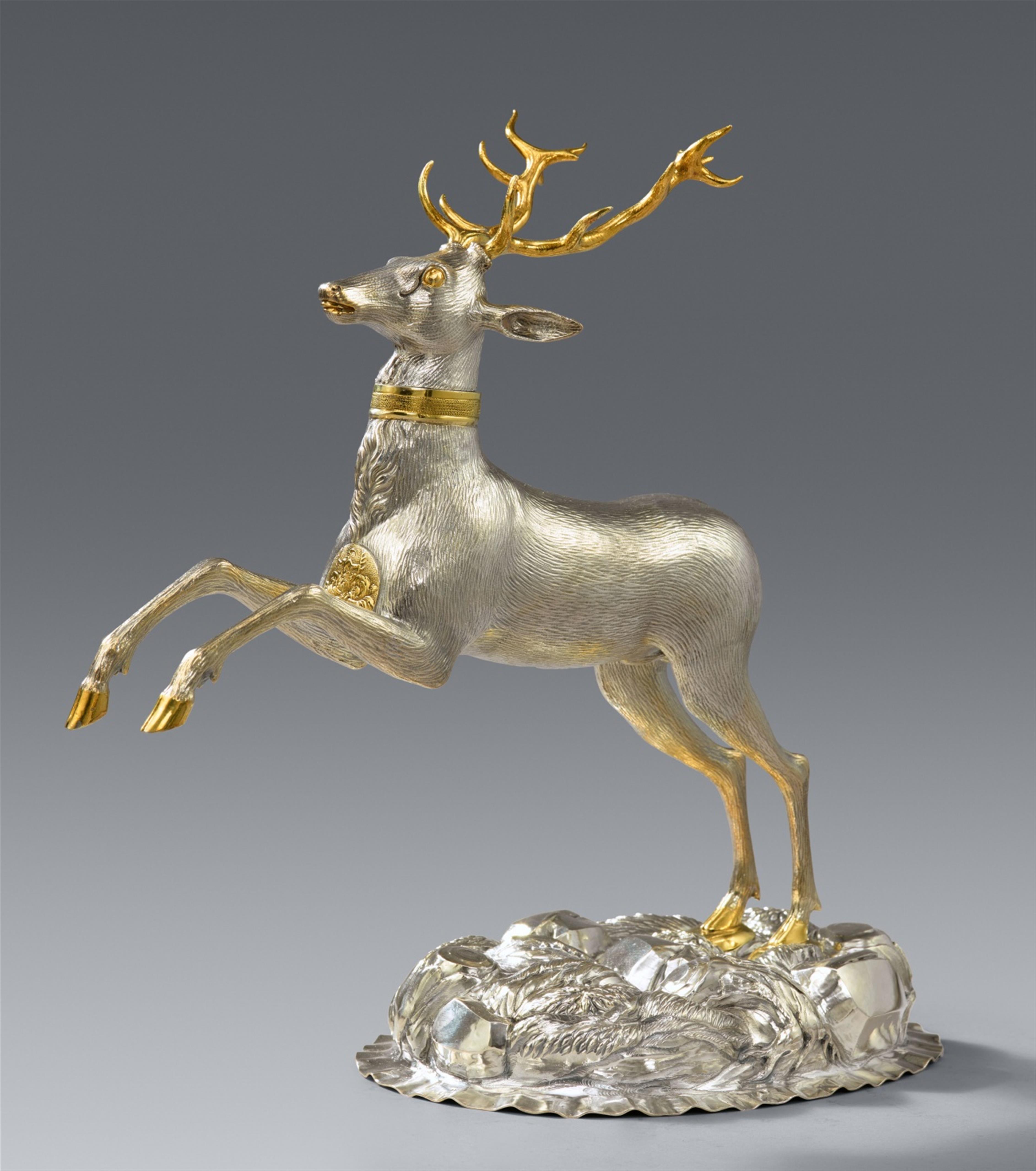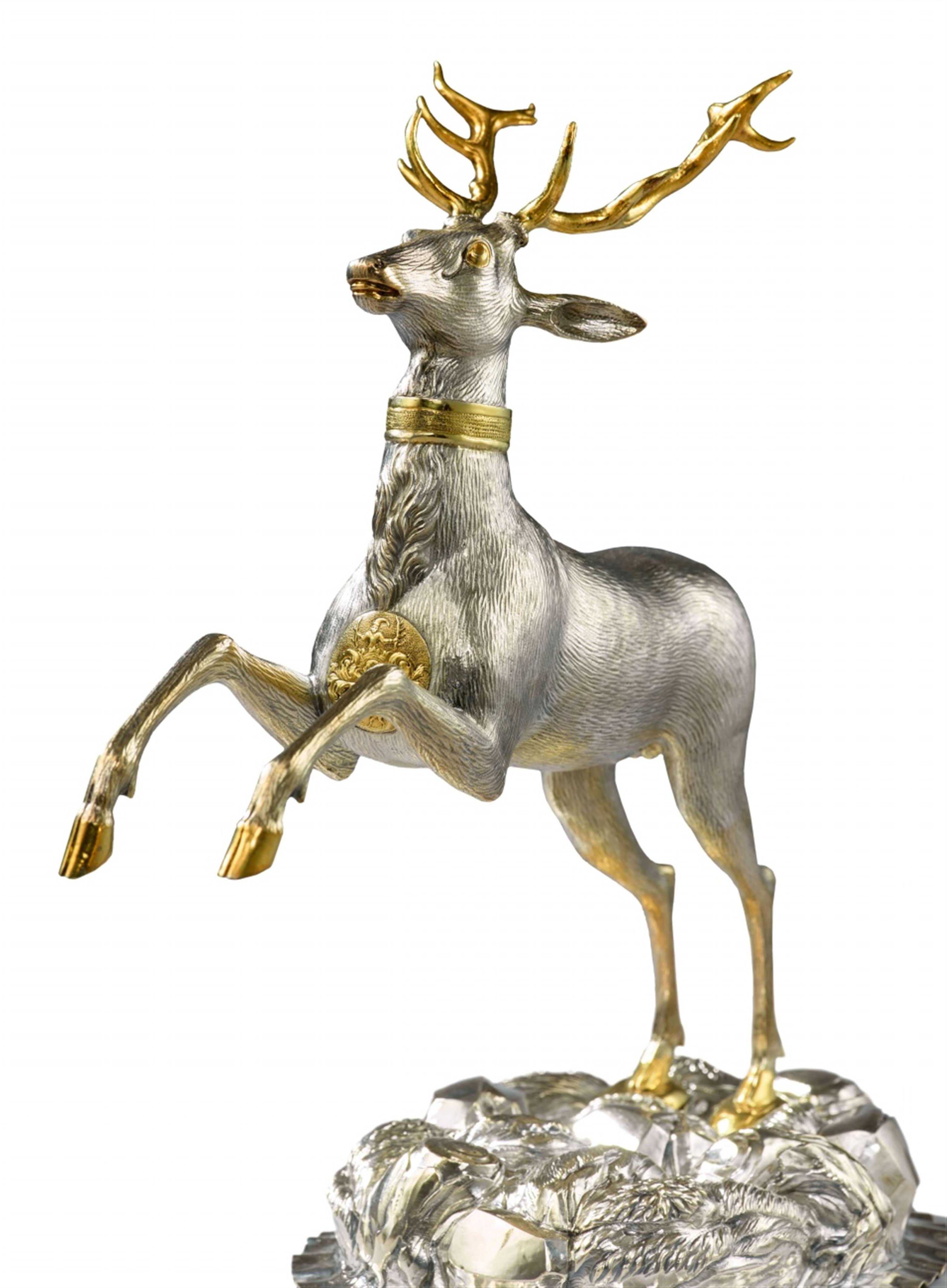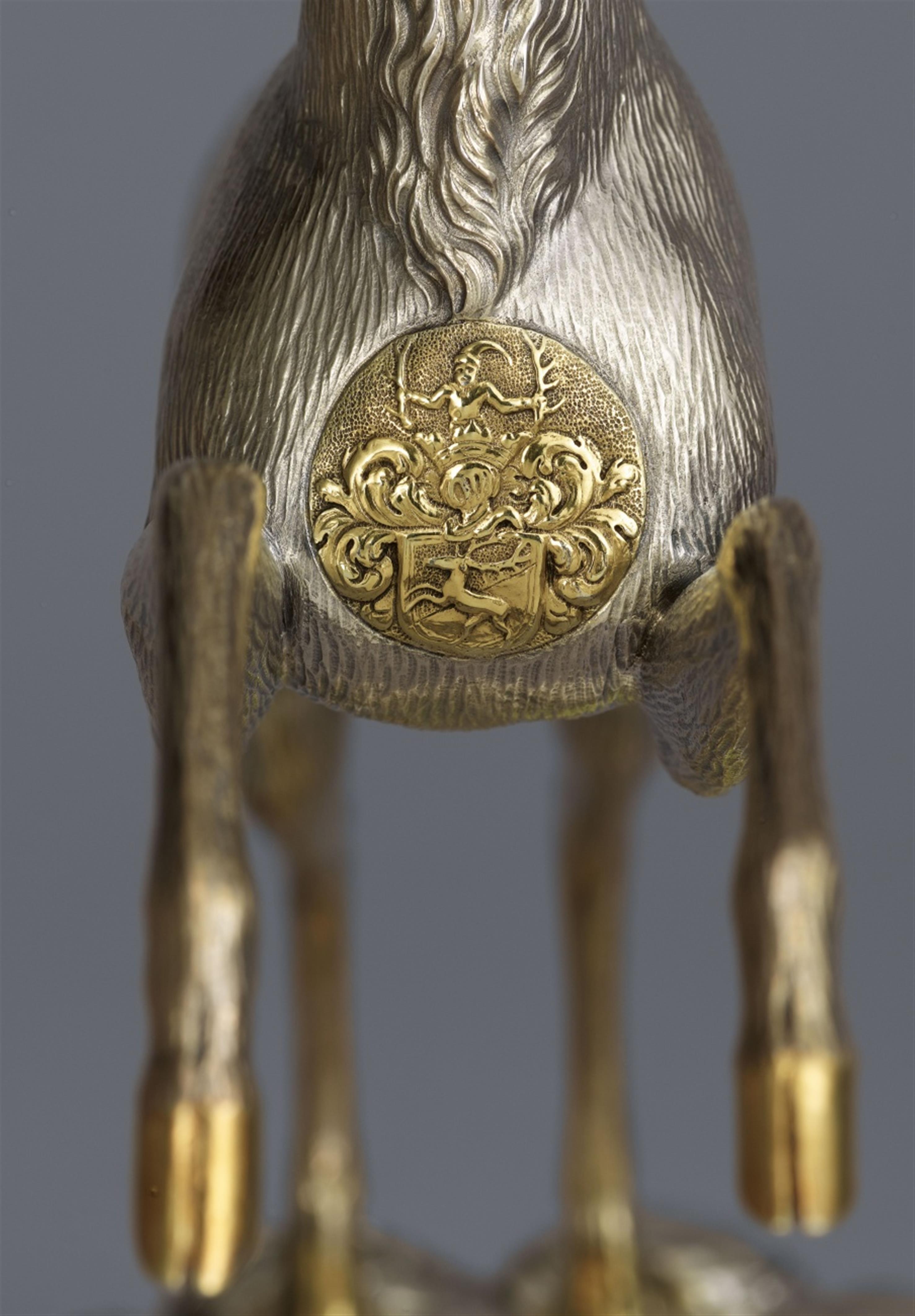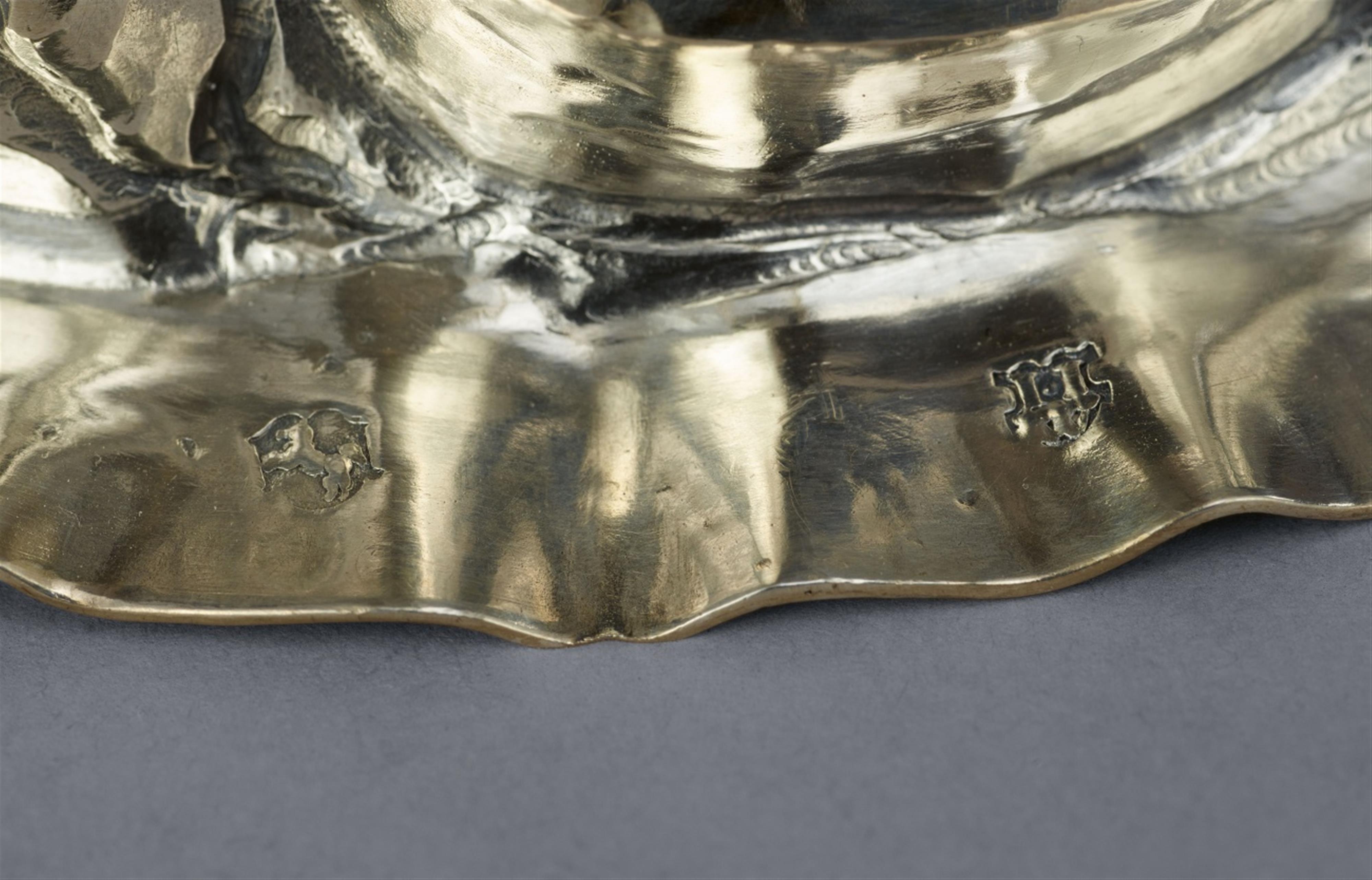A parcel gilt silver drinking vessel in the form of a stag
The plinth on a crimped oval basal ring designed as a rocky earth mound with finely chased grasses and lichen upon which stands a figure of a leaping stag with engraved fur, the head of which can be removed to form a beaker. With a gilt collar around the neck and a medallion on the chest emblazoned with the arms of the Hirschmann aristocratic family from Schorndorf in low relief. H 32, W 21.5, D 15.5 cm, weight 1,009 g.
Stuttgart, marks of Johann Jakob Wagner, circa 1680.
The Hirschmann family has its roots in Schorndorf an der Rems in Württemberg, a town located about 25 km east of Stuttgart, which in the 17th century was one of the wealthiest in the duchy. The Protestant church in Schorndorf houses the epitaph of mayor Michael Hirschmann (1562 - 1634), who, together with his younger brother Ludwig, was elevated to the peerage by Emperor Rudolf II in 1606 and was henceforth allowed to bear this coat-of-arms. Drinking vessels in the shape of stags enjoyed great popularity throughout the 17th century. Hunting was considered the noblest of pastimes and played an important role in the social life of the aristocracy. The precious drinking vessels took on the function of a stirrup cup with which the guests of the hunting party were greeted; but they also, and perhaps above all, served as representative objects in cabinets of curiosities and on the buffets of their owners.
Certificate
Prof. Dr. Ernst-Ludwig Richter, Freudental, 15th July 2016.
Literature
Cf. a very similar piece by the Augsburg goldsmith Hieronymus Zainer in the Maximilianmuseum, illustrated in Müller, Zur Augsburger Goldschmiedekunst des 16. Jahrhunders, in: Augsburg zwischen Renaissance und Barock, Augsburg 1980, p. 417 f., no. 794. For a comparable stag by a goldsmith from Stuttgart in Swiss private ownership see Sänger, Gold- und Silberschmiedekunst, in: Die Renaissance im deutschen Südwesten: Eine Ausstellung des Landes Baden-Württemberg, Karlsruhe 1986, vol. II, p. 633, no. 30. For the Hirschmann coat-of-arms see Siebmacher vol. VI.02, p. 90.








